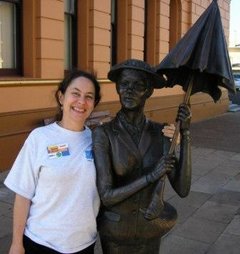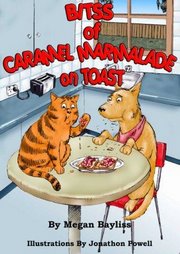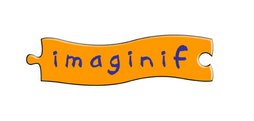 Christmas is upon us.
Christmas is upon us. This joyful and peaceful time can be a
horror season for a child who is being accessed by a sexual predator. Close proximity, a string of holidays and higher alcohol intake can lead to many children experiencing more
sexual abuse at this time of the year than at any other time.
With this in mind, I take the opportunity
to reinforce Body Ownership with every child who comes
through my counselling room and with my own four children.
Here are
two simple and cost effective ideas you can introduce this
Christmas season to reinforce the
protective behaviour element of body ownership.
Paper doll chains: Instead of the usual paper strips joined to make delightful circle chains, make a paper doll chain with your child. As part of the protective learning while making the Christmas chain, show how the dolls are holding hands or touching feet but not touching any other body parts. This is because some dolls and people don’t like being touched and we must respect that. Sometimes we don’t like being touched and we can use our words to tell, but dolls don’t have words so they have to tell us by allowing touching hands only.
Gingerbread person: Using a gingerbread person cutter you can show your child the out line of the gingerbread body. Explain that every person has their own body outline and that each of us is different. Our body outline is our boundary and protector. Nobody can touch us if we don’t want them to. We have a set of Gingerbread family: a male, female, girl and boy gingerbread cutters. I talk about the different sizes of people and how it is also an adults responsibility to protect children, not hurt them in any way.
From the moment we are born
our bodies belong to us. They are our human signature. Babies may need to rely on adults to care for them but each baby’s body is still unique: unique skin, tone, imprints, hair, voice, size and shape.
A newborn baby has little realisation of where their body begins and ends, so as loving parents we engage in touch,
good touch, to teach our babies what is theirs and what is ours. We stroke them, massage them and put clothes on them to give a message of body ownership.
Children who are at risk of sexual abuse, or who have already been sexually assaulted often don’t have a good idea of their body size or where their body boundaries begin and end. Too frequently they fail to recognise their real size in relation to a potential perpetrator. Sometimes they think they are as big as the perpetrator and sometimes they see themselves as much smaller and helpless than everybody else in their family. This size confusion is a result of lowered self-esteem and something that perpetrators may focus on in their grooming process. For this reason it is important to teach our children body ownership and to assist in ensuring they have a healthy self-esteem.
Can you share any other home-made Christmas decoration ideas that would be helpful in
keeping children safe from sexual abuse?
 We're away for a few days. We are heading off to Townsville for a bit of Protective Play. We will be back on New Years Eve.
We're away for a few days. We are heading off to Townsville for a bit of Protective Play. We will be back on New Years Eve. We're away for a few days. We are heading off to Townsville for a bit of Protective Play. We will be back on New Years Eve.
We're away for a few days. We are heading off to Townsville for a bit of Protective Play. We will be back on New Years Eve. Give your children the best protection from sexual predators by talking about bodies: all parts of the body, even the private parts.
Give your children the best protection from sexual predators by talking about bodies: all parts of the body, even the private parts.
 In a Mime of Early Warning Information, I looked at developing emotional language and intelligence to help children uncover their feelings. I provided two game activities to use to get kids playing and talking about their early warning signs. Here’s another two ideas.
In a Mime of Early Warning Information, I looked at developing emotional language and intelligence to help children uncover their feelings. I provided two game activities to use to get kids playing and talking about their early warning signs. Here’s another two ideas.
 Three FREE copies of my Children’s junior fiction chapter book on Protective Behaviours: Bitss of Caramel Marmalade on Toast.
Three FREE copies of my Children’s junior fiction chapter book on Protective Behaviours: Bitss of Caramel Marmalade on Toast. Christmas is upon us. This joyful and peaceful time can be a horror season for a child who is being accessed by a sexual predator. Close proximity, a string of holidays and higher alcohol intake can lead to many children experiencing more sexual abuse at this time of the year than at any other time.
Christmas is upon us. This joyful and peaceful time can be a horror season for a child who is being accessed by a sexual predator. Close proximity, a string of holidays and higher alcohol intake can lead to many children experiencing more sexual abuse at this time of the year than at any other time.


